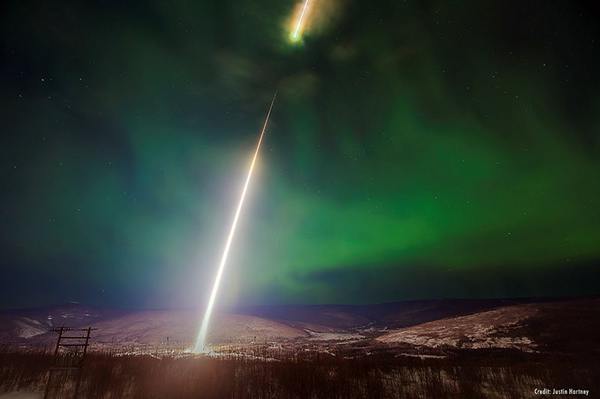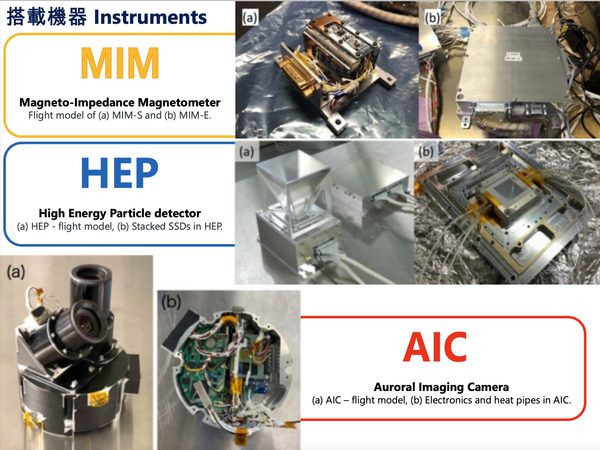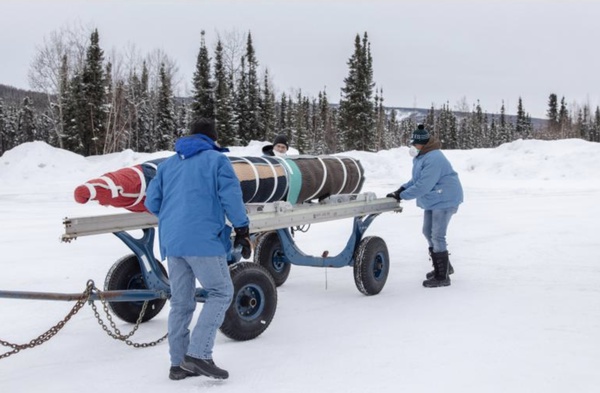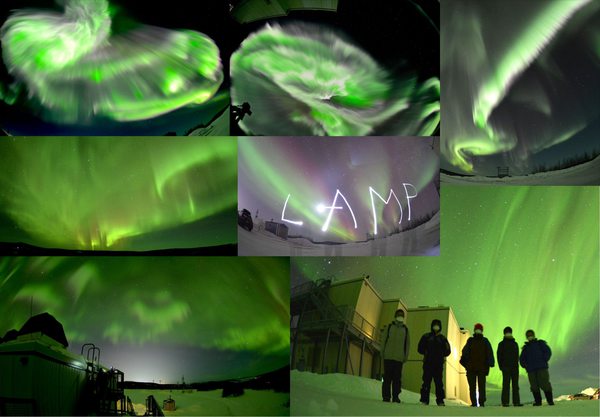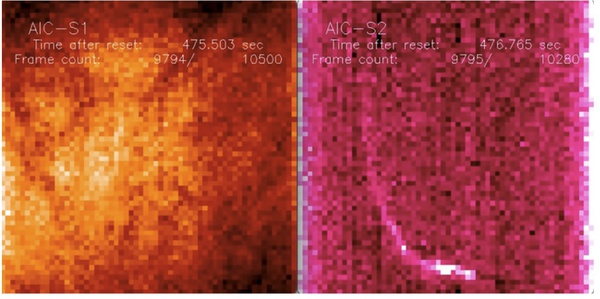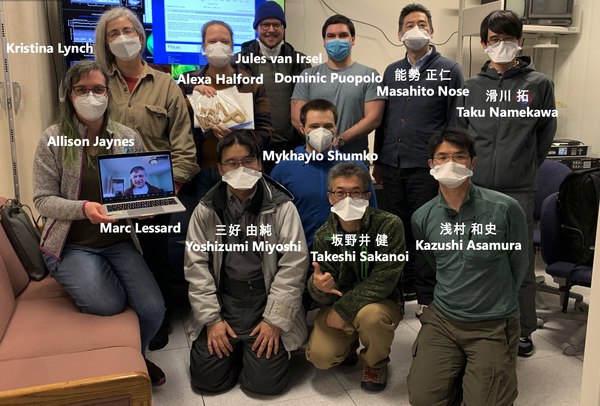Topics 2022.07.12
Successful launch of LAMP rocket in search of mysterious pulsating aurora
Fig.1 Launch of the NASA's sounding rocket LAMP to pulsating aurora (photo by Justin Hartney, (C) NASA). Launch movie.
From past observations by the Reimei and Arase satellites, researchers suggest a theoretical model that pulsating aurora that blinks in a few seconds to 10 seconds and the microburst that is ultra-high energy electrons precipitating from space to the earth is caused by the same generation process. A theory that explains in a unified manner has been proposed. A research group led by Tohoku University, JAXA, Nagoya University, University of Electro-Communications, etc. conducted the LAMP (Loss through Auroral Microburst Pulsation) observation rocket experiment to clarify this theory. We have been discussing the plan of LAMP with USA researchers since 2015, and it was approved adopted by NASA. Japan is equipped with PARM2 (Pulsating AuRora and Microburst 2), an observation package consisting of two auroral cameras (AIC), a high-energy electron observer (HEP), and a magnetic field meter (MIM). Tohoku University is in charge of the two auroral cameras.
The developed rocket moved to the range of the Poker Flat Research Range in Alaska, USA, and entered the launch window from February 24, 2022. In the same period, the research members installed multiple high-speed auroral imagers in the north of Alaska at Fort Yukon, and Venetai. The rocket was launched at 2:27:30 local time in Alaska on March 5, the 10th day of the launch window. Even if we decided to launch, it takes 15 minutes for the actual launch and about 5 minutes for the rocket to reach the highest altitude over Aurora, for a total of about 20 minutes. Everybody spent tense time, and finally the rocket was rushing into active pulsating auroras successfully.
We confirmed from initial analysis that all instruments were operated as expected, and good data were acquired. The two auroral cameras succeeded to obtain weak pulsating aurora at two different wavelengths and fields of views with high-speed imaging of 10 images per second. This is the first time in the world to capture stabilized images of a pulsating aurora from a rocket. We also achieved simultaneous observation of ultra-high energy electrons, low energy electrons, and magnetic fields. Furthermore, ground auroral imaging network captured pulsating aurora over a wide range of Alaska.
In this experiment, we succeeded in observing pulsating aurora in an ideal state. We expect to clarify the relationship between the modulation mechanism of the pulsating aurora and the microburst high-energy electrons exceeding 100 MeV, also called the killer electron. In 2023, the next-generation large-scale three-dimensional atmospheric radar EISCAT_3D will start operation in Sweden. This research group is discussing the LAMP-2 rocket mission, which will launch into the field of EISCAT_3D to elucidate the effect of ultra-high energy electrons from space on the upper- and middle-atmosphere.
LAMP was developed and launched by an international collaborative research team of Tohoku University, JAXA, Nagoya University, University of Electro-Communications, Kyushu Institute of Technology, New Hampshire University, Dartmouth University, University of Iowa, and University of Alaska, in addition to the NASA Goddard Space Flight Center. rice. This research is supported by the JSPS kakenhi funds 15H05747, 16H06286, 17K18804, 18KK0100, 21H04526, and the Murata Science Promotion Foundation Research Grant Program.
Associated Professor, Takeshi Sakanoi, Planetary Plasma and Atmospheric Research Center
Related Links:
- LAMP project homepage
- Public releases(NHK Cosmic Front, Nikkei Newspaper , ISAS News, TECH+, ASCII.jp, ISAS GATE)
- Press releases(Tohoku Univeristy , Nagoya University , University of Electro-Communications, NASA, University of Alaska 1, University of Alaska 2)
- Pulsating aurora (PsA) project
- Movie of the LAMP rocket launch(Aurora Chasers)
- The small scientific saltelite Reimei
- The geospace exploration satellite Arase
Fig.2 PARM instruments provide by the Japanese team. Tohoku University is in charge of AIC.
Fig.3 LAMP rocket moved to launch (photo by Terry Zapearch, (C)NASA).
Fig.4 Aurorae taken at the Science Operations Center in Poker Flat.
Fig.5 Examples of auroral images obtained with two auroral cameras AIC.
Fig.6 International collaboration team of LAMP.

